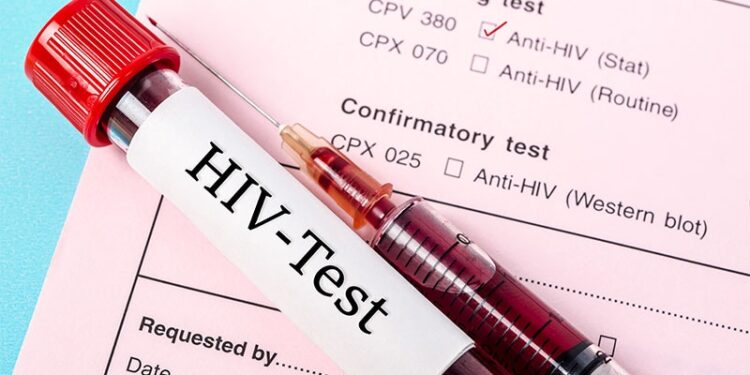TOPLINE:
Higher leukocyte counts, predominantly within the normal range, independently predicted new-onset diabetes in individuals with HIV infection, potentially identifying an increased risk for diabetes up to 10 years before diagnosis.
METHODOLOGY:
- Researchers examined the association between blood leukocyte counts and the risk for new-onset diabetes among individuals of the Swiss HIV Cohort Study from January 2000 to August 2023.
- They included 732 people with HIV infection and diabetes (cases) and 2032 matched control individuals with HIV infection but without diabetes. The median age of all individuals was 54 years, and both groups consisted of approximately 78.7% men.
- New-onset diabetes was defined using the Expert Committee on the Diagnosis and Classification of Diabetes Mellitus criteria: a confirmed plasma glucose level ≥ 7.0 mmol/L (fasting) or ≥ 11.1 mmol/L (non-fasting) with typical symptoms or an A1c level ≥ 6.5%.
- At each 6-monthly visit, the latest leukocyte count was assessed at different intervals before the matching date in cases and control individuals.
TAKEAWAY:
- The median of the most recent leukocyte count was significantly higher in cases than in control individuals (6200 vs 5900 cells per microliter; P < .001).
- Higher leukocyte counts in cases vs control individuals remained significant at multiple timepoints before the diagnosis of diabetes — at years 2 (P = .016), 3 (P < .001), 5 (P = .013), 8 (P < .001), and 10 (P = .003).
- A multivariable analysis showed that compared with individuals in the lowest leukocyte quintile, those in the highest quintile had a significantly increased risk for diabetes (adjusted odds ratio, 2.47; 95% CI, 1.71-3.57).
- Other risk factors included a 2.23-times higher diabetes risk with dyslipidemia, 2.83-times higher risk with overweight, and 2.29-times higher risk with at least 1 year of integrase inhibitor use.
IN PRACTICE:
“Knowledge that high leukocytes, mostly within the normal range, increase DM [diabetes] risk 10 years in advance and by more than twice in 20% of people with HIV (ie, those in the top leukocyte quintile) may motivate clinicians to place even more emphasis on the optimization of DM risk factors (weight, nutrition, physical activity) and, perhaps, ART [antiretroviral therapy] selection in such persons,” the authors wrote.
SOURCE:
This study was led by Sophia C. Meyer and Zoe Klein, University Center for Internal Medicine and Infectious Diseases Service, Kantonsspital Baselland, Bruderholz, Switzerland. It was published online on August 01, 2025, in HIV Medicine.
LIMITATIONS:
The study population predominantly consisted of men, White individuals, and relatively young individuals, potentially limiting generalizability. Nutrition, differential leukocyte counts, inflammatory markers such as C-reactive protein and interleukin 6 are not routinely measured in the Swiss HIV Cohort Study, nor is A1c, which may have led to the underestimation of diabetes cases in the present study.
DISCLOSURES:
This study was funded by the Swiss HIV Cohort Study, the Swiss HIV Cohort Study Research Foundation, and the Swiss National Science Foundation. Several authors reported receiving unrestricted grants, consulting fees, fees for being on the data safety monitoring or advisory board, and other financial and nonfinancial support from pharmaceutical companies, including Gilead Sciences, ViiV Healthcare, Pfizer, and Merck.
This article was created using several editorial tools, including AI, as part of the process. Human editors reviewed this content before publication.
Source link : https://www.medscape.com/viewarticle/elevated-leukocyte-counts-signal-diabetes-risk-hiv-2025a1000m2s?src=rss
Author :
Publish date : 2025-08-21 07:24:00
Copyright for syndicated content belongs to the linked Source.










